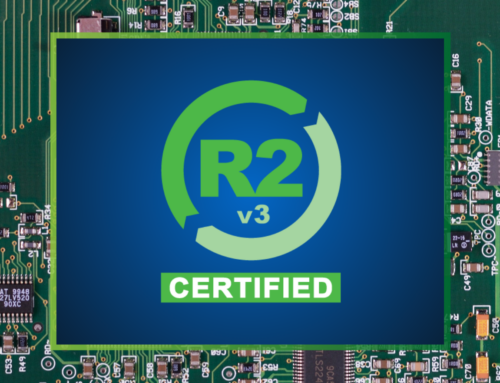Regular maintenance of your enterprise network equipment will keep each device running efficiently, prevent failure, and increase its lifespan. Plus, the increased uptime of well-maintained network equipment saves time and money. Your staff saves time by avoiding frequent troubleshooting and repairs, while your company saves money by getting the most out of their hardware investment.
There are a couple of ways to approach maintenance. It can be done preventatively, by performing regular maintenance tasks, or predictively, by relying on monitoring to predict device failure.
Preventive Maintenance
By performing maintenance tasks on a schedule, you can prevent device failure or malfunction. This method is predictable and makes for easy budgeting and planning. It provides peace of mind, knowing that equipment is regularly checked, and any potential issue is handled proactively. It can also be time-consuming and labor-intensive.
Predictive Maintenance
This method relies on a set of conditions that, when met, trigger an alert for maintenance. For example, if monitoring indicates a potential issue or risk of failure, you are notified that the equipment should be checked and repaired as needed. This method can be cost effective but does not give you the assurance of preventive maintenance.
Regardless of which approach to maintenance you choose, or if you use a combination of both, there are a few things you should check regularly to keep your equipment running smoothly.
Physical Maintenance
Temperature and Humidity
The environment your enterprise network equipment is installed in can impact performance and lifespan. Temperature and humidity outside of ideal ranges can cause equipment malfunction or failure.
Installing blank panels or managing cables well can prevent any unused vertical space in the rack can allow hot exhaust to go back to the intake causing temperatures to rise.
Regularly check air intake temperatures at the top, middle and bottom of each rack to make sure it doesn’t exceed the ideal range.
Keeping a dehumidifier in a small server room or monitoring climate control in a data center can help you keep humidity down.
Dust and Particulates
Dust and other particulates can’t be avoided in some locations but should be regularly monitored regardless of whether it is a visibly dusty environment. Servers and other equipment should be dusted annually at a minimum. Because of the risk of electrostatic discharge that can damage equipment, following best practices is important.
Do not physically brush equipment. Use an air blower meant for IT equipment and keep it at least 12 inches from your equipment at all times.
Take care that the force of the air is not so high that it causes inadvertent damage or that dust is pushed under resistors or capacitors where it may cause damage.
Perform this maintenance away from other equipment so that dust doesn’t circulate and collect elsewhere.
If your equipment is stored in a dusty facility, consider an air purifier or air filtration system.
Corrosion
Corrosion can occur not just in the presence of moisture or humidity but also by corrosive gases. If corrosive gases have been detected where your equipment is stored, you may need to monitor their levels closely. Corrosion monitors can detect and record changes in the concentration of corrosive gases and alert you to levels that can cause damage.
Electrostatic Discharge (ESD) Protection
Devices that monitor ESD can be installed at workbenches, racks and storage areas. There are also special ESD wrist straps that can be worn when installing or uninstalling networking equipment. These devices are strongly recommended, they are affordable and easy to install.
Surge Protection
Power surges and spikes are short-term voltage increases that can cause data corruption, equipment damage, and degrade equipment performance over time. They can occur during thunderstorms that bring lightning strikes or the sudden restoration of power after an outage.
To avoid these problems, install surge protectors or power strips (minimum 6 feet long) and regularly check them for damage, verify that all plugs are securely plugged into the power strip and that the power strip is plugged directly into an outlet. Do not use adapters.
Cabling
Hopefully, when installing your network equipment, the cabling was done in an organized and efficient manner. Excess or unorganized cabling can cause issues, for example, excess cabling or cable position may impact cooling performance if the cables block exhaust vents or loose cables left on the floor could be a safety hazard.
Some cabling best practices:
Cable managers can be used to corral cables and spool devices can prevent kinking.
Velcro ties can be used to keep cables together.
Store spare cables in case of failure. Keep unused cables bagged and capped.
Regularly verify and maintain the cabling labeling and cabling diagrams.
Other Maintenance Activities
Software Updates
For optimal operation, networking software should be updated as frequently as possible. When your network isn’t being kept up-to-date, it becomes vulnerable to security threats. The best way to make sure you are keeping your network current is to set up automatic monitoring for updates, upgrades, and potential vulnerabilities.
The frequency of updates will depend on your system and the software you’re running. If possible, run internet- or cloud-based updates daily. Other manual updates should be done as needed or on a regular schedule to avoid falling behind.
Support Contracts
You may have support contracts from several vendors for your software, servers, routers, switches, and other equipment. These support contracts are generally in place for a set amount of time, starting from the time of purchase or install. Keep your support contracts stored safely and backed up.
Consider using your calendar to keep track of when support contracts expire or need to be renewed. Setting notifications to alert you to expiring support contracts will allow you time to assess need, get approval for renewal, or research other options.
Maintaining a network is a full-time job, but there are tools available that can make network maintenance easier. For insight into the tools and practices for well-maintained network hardware, see our collection of blogs around networking.




